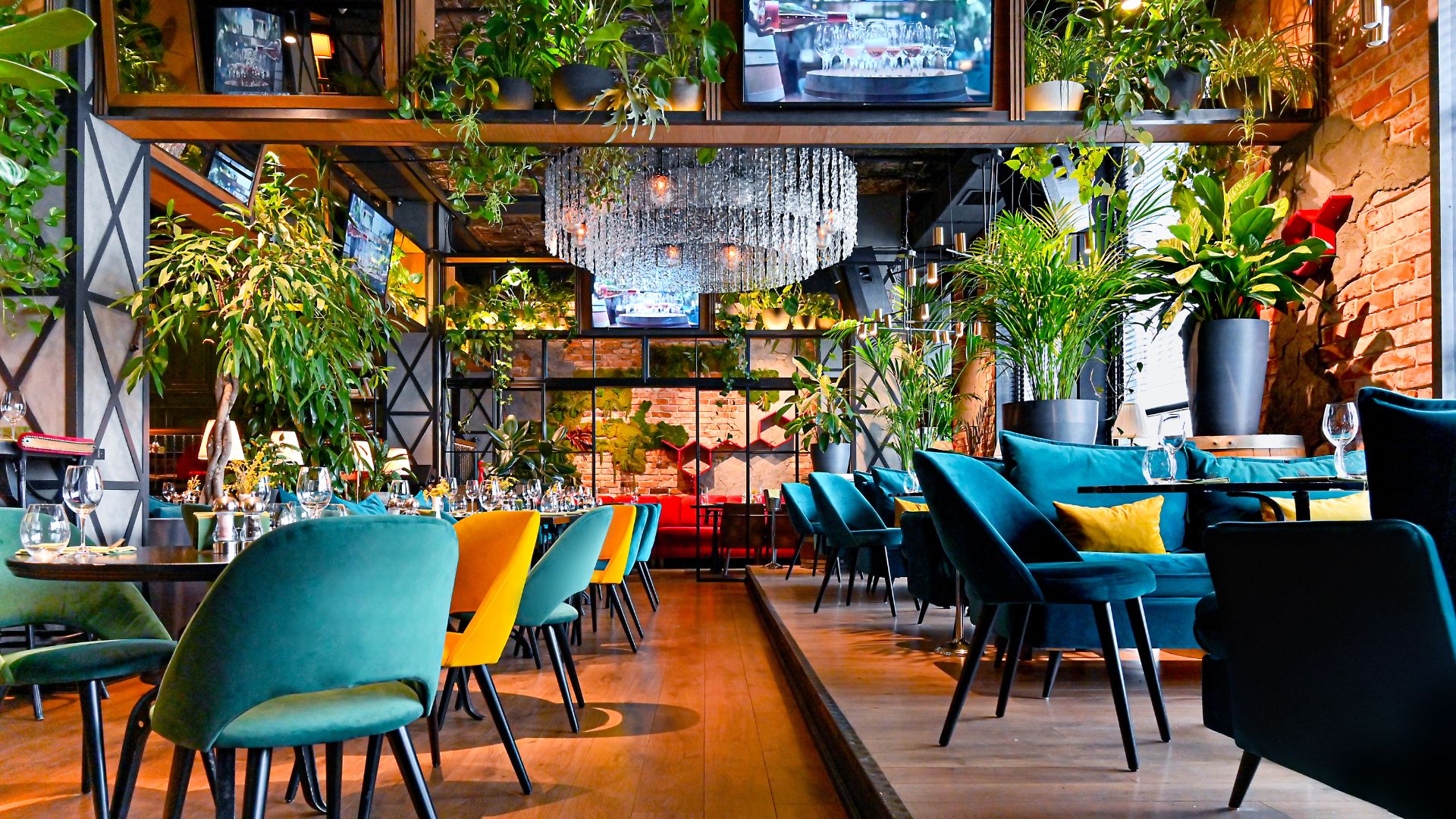The restaurant industry is a substantial element of the hospitality industry worldwide and in 2023 there are many factors that affect genuine and ongoing change. Our complete guide covers global industry trends and changes over time, technology, statistics, employee regulations and the restaurant industry award.
What is the restaurant industry?
The restaurant industry is an element of the hospitality industry and falls under the "food and drink" category. It can include restaurants, bars, cafes, fast food, food trucks and any other business that prepares food or drinks and allows customers to buy and eat on the premises or take away.
What is the difference between the restaurant industry and the food service industry?
The main difference between the restaurant industry and the food service industry is that restaurants provide prepared or cooked food. Whereas the food service industry incorporates any business that works in food trade, such as manufacturers, supermarkets, convenience stores, butchers, restaurants and fish markets. The restaurant industry falls into both the food service and hospitality industries.
Food service industry examples
The food service industry is a broad category that encompasses any business making a profit from food and drink, including
-
Bakers
-
Butchers
-
Food manufacturing factories
-
Winemakers
-
Distilleries
-
Caterers
-
Restaurants
-
Fast-food Outlets
-
Supermarkets
-
Convenience Stores
-
Food Markets
Is a restaurant a service business?
The restaurant industry is a service business as well as a food business. Restaurants, cafes and bars first and foremost fall under the broad food and drink industry. Within this they are encompassed within the hospitality industry and extensive service industry. The food and drink they prepare and sell is the product, but the waiting, bar and kitchen operations are part of the service. Therefore, restaurants have two different industries and challenges to succeed in.
How eating out has changed over timeOur current standards in society have had a big impact on the way we eat out, from the "instant culture" of needing everything quickly to comparing lives on social media. What we expect from our service and dining experience has transformed the way restaurants, bars and cafes have to operate as well, competing with the rise in technology impacting every industry.
The COVID-19 pandemic forced some restaurants to close and others to focus on creative takeaway menus and cook-at-home options. The restaurant industry still has a long way to go to recover from the lockdowns and the full impact on the way we eat out post-pandemic are still changing and being analysed.
Let's take a deep dive into the changes.
Ways restaurants have changed
Instant Culture
The instant culture refers to the expectation to have everything now for instant gratification. This speed and efficiency presumption has affected all aspects of the restaurant industry, from quick reservations to ordering, service wait times and pay period.
Social Media
From Instagram reels of beautiful food to TikTok hype videos, restaurants are under new pressures to create 'Instagrammable' dishes. Every potential customer could be a food blogger or have the potential to share their meal with hundreds of prospective customers.
The top hashtags on Instagram and TikTok in 2022 were #food and #foodporn.
Internet
The internet has been used in households since the 90's and is forever evolving and impacting the restaurant industry. From competing for the top results on a Google search to review sites controlled by customers, a restaurant's reputation has never been more important.
Regularity of eating out
It used to be that eating out was only for special occasions but with our growing busy lifestyles, eating out is now seen as a convenient alternative to cooking. The restaurant industry is now swarmed with fast-food for every type of cuisine and competing on price and speed.
Open Kitchens
Growing in popularity, an open kitchen adds to a restaurant's ambience, inviting customers to see the culinary art and satisfy a "nothing-to-hide" mentality. Staff are now on show and have to be conscious about their culinary flare, appearance and conversation.
Conscious Customers
Customers now have access to more and more information on quality produce, fair prices, cuisines and decor styles. There is a pressure on restaurants, cafes and bars to promote their best practices from using local food to responsible waste processes.
How has food changed over time
With the rise of the internet, cheaper travel and a health conscious society, the food we eat is evolving to keep up. These are the main ways we have seen food change:
Exposure to cuisines
With the growing knowledge of customers through social media and the internet, we are now eating more cuisines than just our local favourites. There is a pressure on chefs to reinvent traditional foods, create 'fusion' dishes and introduce new flavours to keep their menus exciting.
Fast-food Variety
Gone are the days of thinking of fast-food as unhealthy and lacking in flavour. With the growing demand for casual eat options and the boom of health and fitness, you can now get a quick meal in almost all cuisines.
Plant Based
Veganism and plant-based alternatives for meat, milk and cheese have risen globally. Restaurants and cafes are now creating dishes or sections of their menu to attract vegan customers.
Dietary Requirements
A lot of restaurants and cafes are creating gluten free or dairy free alternatives on their menu as the more health conscious society learns about their gut, allergies and lifestyle.
Quality food
After the unhealthy, convenience food boom since the 70's, there is now a trend for high quality food and produce. Consumers are now looking for organic food, farm-to-table restaurants, local ingredients and animal cruelty free produce on restaurant menus.
Restaurant industry insights & analysis
Australia
Restaurant industry size in Australia
The market size is measured by revenue. In 2023, Australia's restaurant industry is $14.1bn.
Australian restaurant industry statistics
-
29,645 restaurants in Australia in 2023
-
25,406 Cafes and Coffee Shops in Australia in 2023
-
In 2022 there were 946,600 people employed in cafes and restaurants in Australia. 40% of these were full time and 55% were female.
-
There are zero Michelin Star restaurants in Australia in 2023
-
Australia's most expensive dish in 2022 was The Gold Kebab at Tulum in Melbourne for $1,500 AUD ($1,072 USD)
-
The most expensive cocktail served in Australia in 2022 was the "Gold Fashioned" at Melbourne's Sky Bar, priced at $15,000 AUD ($10,723 USD)
-
McDonalds is the leading fast food chain in Australia with over 8.1 million customers.
-
KFC is the second most popular fast food chain with over 6.8 million customers in Australia.
-
The top Google searches per month per cuisine in Australia in 2023
-
Japanese Restaurant - 289K
-
Italian Restaurant - 173K
-
Brunch - 144K
-
Chinese Restaurant - 118K
-
Mexican Restaurant - 91K
-
Thai Restaurant - 90K
-
Greek Restaurant - 44K
-
Lebanese Restaurant - 39K
-
Chicken is the most popular meat in Australia, 44.13 kilos were consumed per person in 2021.
-
Seafood consumption in Australia in 2020 was 356 thousand tonnes.
Growth of restaurant industry in Australia
Since 2018 to 2023, the restaurant industry market size (revenue) in Australia has seen a decline of 0.2%. The effects of the COVID-19 pandemic lockdowns have had a significant impact in this.
However, the amount of restaurant businesses in Australia have grown by 6% between 2018 and 2023.
New Zealand
Restaurant industry size in New Zealand
The market size, measured by revenue, in New Zealand in 2023 is $6bn.
New Zealand restaurant industry statistics
-
There are 9,010 Cafes and Restaurants in New Zealand in 2023 with Auckland home to over half of them.
-
As of 2022, there were 75,100 people working in the cafe and restaurant industry in New Zealand.
-
There are zero Michelin Star Restaurants in New Zealand.
-
McDonalds is the most popular fast food chain in New Zealand with over 33.2% of customers.
-
KFC is the second most popular fast food chain in New Zealand with over 17.7% of customers.
-
The Top Google Searches per month per cuisine in New Zealand in 2023:
-
Indian Restaurant - 33K
-
Japanese Restaurant - 32K
-
Italian Restaurant - 17K
-
Chinese Restaurant - 17K
-
Mexican Restaurant - 12K
-
Thai Restaurant - 11K
Growth of restaurant industry in New Zealand
From 2018 to 2023, the market size (revenue) of the restaurant industry in New Zealand increased by 0.5%. The number of restaurant businesses have grown by 1.5% in New Zealand from 2018 - 2023.
The UK & Ireland
Restaurant industry size in the UK & Ireland
The Restaurant Industry market size (revenue) in the UK in 2023 is $19.9bn.
The UK & Ireland restaurant industry statistics
-
There are 32,659 restaurant businesses in the UK in 2023.
-
In 2023, there are 7,700 Cafes and Coffee Shops in the UK.
-
In 2022, there were 475,000 people employed in the restaurant industry in the UK.
-
There are 194 Restaurants with a Michelin Star in the UK as of 2022.
-
The AA Restaurant Guide Rosette Awards is the local recognised rating in the UK. There are over 2,000 rosette awards each year and a restaurant can be awarded up to five rosettes.
-
The most expensive dish in the UK was a pudding at The Lindeth Howe Country House Hotel in the Lake District, priced at £22,000 ($35,000 USD).
-
The most expensive cocktail in the UK is a Margarita from Cantina Laredo in Covent Garden for £50,000 ($62,000 USD).
-
The largest fast food chain in the UK is Subway with 2,311 locations in 2022.
-
The second largest fast food chain in the UK is Greggs bakery with 2,229 locations in 2022.
-
The Top Google Searches per month per cuisine in the UK in 2023:
-
Indian Restaurant - 311K
-
Italian Restaurant - 231K
-
Chinese Restaurant - 181K
-
Japanese - Restaurant 119K
-
Turkish Restaurant - 89K
-
Mexican Restaurant - 63K
-
Thai Restaurant - 61K
-
Greek Restaurant - 40K
-
Spanish Restaurant - 21K
Growth of restaurant industry in the UK & Ireland
From 2018 to 2023, the market size for the restaurant industry in the UK has declined by 5.1%.
The US
Restaurant industry size in the US
The Restaurant Industry market size (revenue) in the US is $909bn.
The US restaurant industry statistics
-
There are 1 million + restaurant businesses in the US.
-
155,448 of these are independent single location full-service restaurants as of 2022.
-
There are 201,865 fast food restaurants in the US in 2022.
-
28,090 restaurants in New York as of 2023.
-
In 2022, there were 14.9 million people employed in the restaurant industry in the US.
-
There are over 200 Michelin star restaurants in the US.
-
The most expensive US dish sold at a restaurant was Fleur Burger in Las Vegas for $5,000.
-
The Ono Champagne Cocktail in Las Vegas is the most expensive in the US, selling for $10,000.
-
McDonalds is the largest fast food chain in the US with sales of $46 bn in 2021.
-
The second largest fast food chain is Starbucks, sales of $24.3 bn in 2021.
-
The Top Google Searches per month per cuisine in the UK in 2023:
-
Mexican Restaurant - 3.5M
-
Indian Restaurant - 1.4M
-
Italian Restaurant - 1M
-
Chinese Restaurant - 888K
-
Japanese Restaurant - 820K
-
American Restaurant. -530K
-
Thai Restaurant - 279K
-
Greek Restaurant - 239K
Growth of restaurant industry in the US
The US Restaurant industry has grown by 0.4% from 2008 to 2023.
How jobs work in the restaurant industry in different countries
Australia
Restaurant industry award
The Restaurant Industry Award covers workplace entitlements and obligations. The award categorises pay, allowances, leave and termination rights depending on the role level, contracted hours and age.
For an introductory level role in the restaurant industry, as a full time employee classification, the pay details are:
-
16 and under - $10.69/hr
-
17 - $12.83
-
18 - $14.97
-
19 - $18.18
-
20 and over - $21.38
Any juniors with duties to sell and serve alcohol within their waiting duties must be paid the adult rate regardless of their age.
Paid vs unpaid meal break
Full-time staff in Australia (working 7-10 hours a day) are authorised to take one unpaid meal break between 30 and 60 minutes.
Paid rest break
Staff in Australia are entitled 2 paid rest breaks of 10 minutes if working full time hours (7-10 hours a day).
Annual Leave loading
Employees in Australia are entitled to four weeks annual leave per year if full time. This is pro-rata for part time.
Employee's rostered hours
The maximum hours a day a casual employee in Australia can work is 12 hours with enforced meal breaks. Over a week period, this calculates to 38 hours on a 4 week roster. The minimum hours for shift work is 3-4 hours so if an employee is rostered for less, they are entitled to the minimum hour pay.
Guaranteed hours
Full time employees
A full time employee in Australia is guaranteed 38 hours a week.
Part time employees
Part Time employees are classified as regular working hours each week less than 38 hours. The guaranteed hours must be specified in the contract.
Casual employees
Casual employees are not guaranteed hours in Australia.
Overtime rates
Overtime for Monday - Saturday extra hours worked in Australia are:
-
150% of their minimum hourly rate for the first 2 hours.
-
200% of their minimum hourly rate for the hours worked after that.
Overtime for hours worked on a Sunday in Australia are:
-
200% of their minimum hourly rate for all hours worked on Sunday
Public holidays & Penalty rates
Employees working overtime on a public holiday in Australia are entitled to 250% of their minimum hourly rate for all hours worked.
Split shift allowance
Employees (excluding casual employees), who have a broken/split shift are guaranteed an additional allowance of $3.10 per day for periods between 2 and 3 hours. If the period between shifts is 3 hours or more then they are entitled to $4.70 per day.
New Zealand
Restaurant industry award
There is no restaurant industry award in New Zealand to unify employee rights, However, average pay is different depending on the job, location and the skill level.
Paid vs unpaid meal break
Meal breaks must be at least 30 minutes and do not need to be paid.
Paid rest break
Employers are required to pay for two 10 minute rest breaks.
Annual Leave loading
You are entitled to 4 weeks annual leave in New Zealand, both full time and part time.
Employee's rostered hours
The maximum hours an employee can be rostered to work in New Zealand is 40 hours over 5 days unless agreed otherwise in the contract.
Guaranteed hours
Full time employees
Full time employees in New Zealand are guaranteed 30 or more hours per week.
Part time employees
Part time hours are less than 30 and guaranteed minimum hours must be stated in the contract agreement.
Casual employees
Casual employees have zero guaranteed hours in New Zealand.
Overtime rates
There is no law on overtime rates in New Zealand, this must be agreed between the employer and employee.
Public holidays & Penalty rates
The employer is required to pay time and a half per hour for any employee working on a public holiday in New Zealand.
Split shift allowance
There are no laws on split shift allowance in New Zealand.
TheUK&Ireland
Restaurant industry award
The UK does not have a restaurant industry award but they do categorise national minimum wage based on employee classification. If you are a full-time junior in the restaurant industry, the pay is detailed as:
-
Under 18 - £4.81/hr
-
18-20 - £6.83/hr
-
21-22 - £9.18/hr
-
23 and over - £9.50/hr (known as the National Living Wage)
In April 2023, the rates will change to:
-
Under 18 - £5.28/hr
-
18-20 - £7.49/hr
-
21-22 - £10.18/hr
-
23 and over - £10.42/hr (known as the National Living Wage)
Paid vs unpaid meal break
The minimum rest or lunch break for employees working at least 6 hours a day is 20 minutes uninterrupted. This does not need to be paid.
Paid rest break
The minimum break for employees working at least 6 hours a day is 20 minutes uninterrupted. This does not need to be paid.
Annual Leave loading
Full time employees who work a 5-day week are entitled to 28 days paid annual leave, or 5.6 weeks of holiday. Part time employees are entitled to 5.6 weeks of annual leave but their paid holiday equates to the amount of hours they work in one week.
Employee's rostered hours
Employees cannot work more than 48 hours a week unless agreed. Staff must have an uninterrupted rest of 11 hours between each shift plus a guaranteed 24 hours uninterrupted hours of rest each week.
Guaranteed hours
Full time employees
There is no legal minimum hours for full time workers in the UK, this must be specified in the contract with the employee. Employers cannot ask you to work additional hours about 48 hours per week.
Part time employees
There is no law on minimum part time hours in the UK, this is specified in the individual employer contract.
Casual employees
Casual employees on "zero hour contracts" are not guaranteed any hours in the UK.
Overtime rates
There are no laws stating an employer must pay for work overtime but this can be agreed in the individual contract. However, the average pay for the amount of hours worked in one week must not fall below the national minimum wage.
Public holidays & Penalty rates
There are no regulations stipulating that an employer has to pay extra for hours worked on a public holiday, this must be a written agreement prior to starting the contract. Employees are entitled to their ordinary pay rate.
Split shift allowance
Full time and part time staff in the UK are eligible for a shift allowance if their hours worked on each shift are more than 2 hours and there is more than 60 minutes between. The allowance is calculated depending on the ordinary pay rate.
The US
Restaurant industry award equivalent
There are different laws for employee classification and pay per state in the US. However, as a guide there is a Fair Labor Standards Act that states the minimum cash wage for tipped employees in the restaurant industry is $2.13 per hour.
Paid vs unpaid meal break
Less than half the states in America have laws requiring employers to provide a meal break for employees who work more than five or six hours. If you do not work during this meal break then it is unpaid. If you are required to work then it is paid.
Paid rest break
Some states require employers to provide 10 minute paid rest breaks for every four hours worked. Most states do not have laws on paid rest breaks.
Annual Leave loading
There are no laws requiring employers to pay for annual leave. The majority of businesses do provide paid annual leave in their employment contracts and it averages around 10 days per year.
Employee's rostered hours
Currently there are no standardised laws across all states stipulating rules on a roster cycle.
Guaranteed hours
Full time employees
The standard full time work hours in the US is 40 hours per week.
Part time employees
There are no laws in the US on the minimum hours for part time employees, this is arranged in a prior written agreement between employer and employee.
Casual employees
Casual employees do not have minimum guaranteed hours in the US.
Overtime rates
Unless agreed in a contract, any hours in addition to a 40 hour work week must be paid at time and a half of the ordinary pay rate.
Public holidays & Penalty rates
Employees are entitled to basic pay plus a holiday premium pay for each hour worked on a public holiday in the US, usually the total works out to be double their usual pay rate.
Split shift allowance
The only law on split shifts is that the employee must leave the premises and not be required to work between shifts in order for this break to be unpaid. There is no allowance for split shifts.
Different types of restaurants
Finedining
Fine dining stands out from all other restaurants as an elegant, exclusive and expensive dining experience. There is high quality in every aspect, from the culinary flare, flavours and quality food to the polished decor and impeccable service.
Casualdining
A casual dining restaurant is a laid-back approach to full-service dining. They offer more customer service, care and quality than a fast-food establishment but offer a more affordable, comfortable and family-friendly atmosphere than fine dining.
Fast-food
A fast-food establishment is any restaurant with quick-service from order through to serving the meal. Most fast-food restaurants don't offer table service and sell to customers via a counter and/or drive thru.
Family
A family restaurant is a typically cheaper and simpler menu with milder flavours, serving both adults and children in a relaxed setting.
Cafes
A cafe is a restaurant with a main focus on tea and coffee. They may also serve a light menu, bakery items or snacks and offer counter or table service.
Buffets
Buffets are a self service dining experience in which the customer can pay a fixed-price and help themselves to as much food as they want from pre-prepared hot plates and fridges.
Foodtrucks
Food trucks are modified vehicles with a kitchen and ability to serve customers from a window or door. Some may offer counter standing tables or seating next to the truck. The menu is usually easy-to-eat meals, from tacos to wraps and are growing more popular across all cultures and cuisines.
Foodstands
A food stand is typically a temporary stall (although some may become more permanent) that is used to prepare, cook and sell takeaway food to customers. This is increasingly popular for markets, festivals and events.
Pop-uprestaurants
A pop-up restaurant is a temporary establishment, from a private space to a commercial building, in which a restaurant idea can be tested out. It attracts customers with an exclusive event style and chefs can experiment with new menu concepts or restaurant ambience.
How technology has impacted the restaurant industry
POS systems
Point of Sale (POS) Systems allow restaurants to track and record every stock, supplier and inventory for their business plus manage all payments and orders. It is an incredibly efficient system which has combined many processes into a hassle-free and more accurate operation. Pos Systems for restaurants have not only made the day-do-day running proficient, it has also enhanced quality customer service.
Table reservation software
Making a restaurant reservation has moved from solely over the phone to online as the 'instant culture' grows. In order to capture the most customers, it is beneficial to make the reservation process as simple as possible online.
Software not only helps attract customers, it takes away the stress of reservations from the restaurant owners. ResDiary’s restaurant reservation software takes credit card deposits to protect business owners from no-shows, integrates into websites and helps balance the capacity for bookings vs walk-ins.
Google is the number 1 search source globally and it has impacted the way a restaurant needs to market themselves. Customers are able to book online through Google with a software integration like ResDiary or even review any business publicly. It is incredibly important to a restaurant's reputation as "word of mouth" recommendations have gone from a small number of face-to-face people to reaching thousands online.
Socialmedia
Food is heavily marketed on social media and can be shared by anyone with a profile. From food bloggers to homemade food reels, the restaurant industry has had to modernise in order to keep up. Restaurants can create their own social media platforms or harbour partnerships with food bloggers to market their menu.
Websites
It is now a necessity for a restaurant to have their own website to keep up with customer demand. A lot of research goes into deciding on a restaurant and customers now like to see the menu, images and reviews before deciding to book.
Websites like Timeout, The Urban List and Concrete Playground publish restaurant listicles which are read by thousands of potential customers. Not only is it important to have your own site, it is beneficial to create partnerships with blog sites.
Review websites
Sites like Tripadvisor, Yelp and Good Food have grown in popularity and it's estimated 60% of customers read reviews before deciding on a restaurant. Previously, an issue could be resolved directly with the customer but now it is presented to a wide reaching audience. The restaurant industry faces an even bigger challenge of offering top quality service 24/7. However, it also has the opportunity to proactively invite customers to review and promote their business.
Chatbots
Chatbots are computer programs that can integrate into websites and complete customer service tasks. The restaurant industry can use this technology to have a bot
-
make reservations
-
take orders
-
answer frequently asked questions
-
ask for reviews
-
show the menu
-
provide a delivery status
This enables restaurants to answer customer queries 24/7 without the challenges of hiring staff for these duties.
Food technology
Food science has developed into technology to help deal with the challenges of production, research, preservation, quality control and packaging. Food technology has changed the way the restaurant industry is able to buy and store their ingredients for longer and provide a wide range of alternative meat ingredients.
QR Codes
QR Code technology became a necessity in the restaurant industry during the pandemic and transformed a lot of table service restaurants into a more self-serve style. Although the majority of the Covid-19 restrictions affecting the industry have now been scrapped, many restaurants have kept the QR code technology. It enables a restaurant to update the menu efficiently, receive orders quickly and eliminate no-pay walk-outs.
Book a demo with ResDiary today
One of the most beneficial technology advancements for the restaurant industry has been reservation software. It opens restaurants up to a wider audience, enables them to reach full capacity and runs table management efficiently.
ResDiary has helped over 9,000 restaurants globally by taking the reservation stress away from business owners and employees and increasing their revenue.
To see how ResDiary can be personalised to help your restaurant, book a demo and let us walk through your specific needs and challenges.







